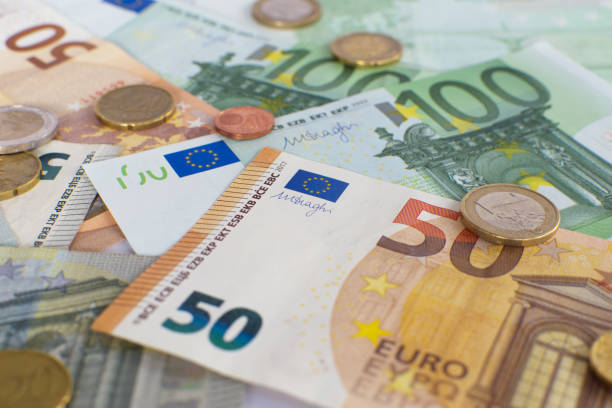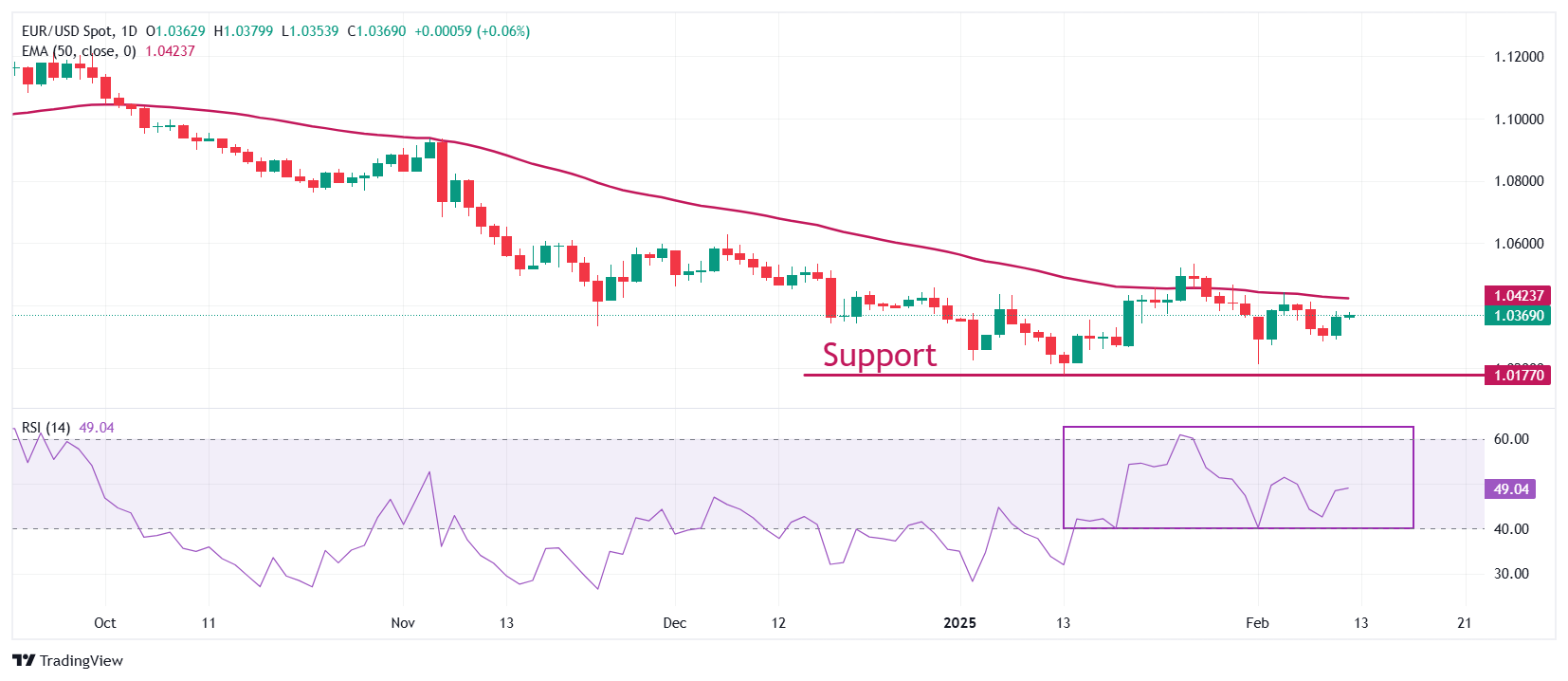
EUR/USD edges higher ahead of the US CPI data for January, which will influence the Fed’s monetary policy outlook.
European Commission President Ursula von der Leyen has threatened to take countermeasures against US President Trump’s 25% levy on steel and aluminum imports.
The ECB is expected to cut interest rates three times more this year.
EUR/USD moves higher to near 1.0380 in Wednesday’s European session ahead of the United States (US) Consumer Price Index (CPI) data for January, which will be published at 13:30 GMT.
The US CPI report is expected to show that annual core CPI inflation – which excludes volatile food and energy prices – grew at a slower pace of 3.1%, compared to a 3.2% increase in December. In the same period, headline CPI inflation is estimated to have remained steady at 2.9%. On month, both headline and core CPI are expected to have risen by 0.3%.
The inflation data is expected to influence market speculation for how long the Federal Reserve (Fed) will keep interest rates in the current range of 4.25-4.50%. Signs of a slowdown in inflationary pressures would boost Fed dovish bets. Meanwhile, sticky inflation data would suggest that the Fed should keep interest rates higher for longer.
According to the CME FedWatch tool, the Fed is almost certain to hold interest rates at their current levels in the March and May policy meetings. However, there is a 50% chance that the Fed could reduce interest rates in the June meeting.
On Tuesday, Fed Chair Jerome Powell reiterated on the first day of a two-day testimony at Capitol Hill that the central bank is in “no rush to cut interest rates” as the economy is “strong overall”, with a lower unemployment rate and inflation staying well above the 2% target. Powell added, "We know that reducing policy restraint too fast or too much could hinder progress on inflation."
This week, investors will also focus on the US Producer Price Index (PPI) and the Retail Sales data for January, which will be released on Thursday and Friday, respectively.
Daily digest market movers: EUR/USD remains firm despite fears of US-EU trade war deepens
EUR/USD stays firm as the Euro (EUR) continues to outperform its major peers, even though risks of a trade war between the US and the Eurozone have deepened. European Commission President Ursula von der Leyen warned on Tuesday that 25% tariffs on imports of steel and aluminum into the US by President Donald Trump “will not go unanswered”. Von der Leyen added that the EU will act to “safeguard its economic interests” and is ready for “proportionate countermeasures”.
President Donald Trump signed executive orders imposing 25% tariffs on steel and aluminum imports into the US without exemptions or exclusions in a way to boost local production. Trump is also poised to impose reciprocal tariffs on nations with whom he sees unfair trade practices.
Market participants expect the Eurozone to face significant pressure from reciprocal tariffs. The 27-nation bloc charges 10% tariffs on automobile imports from the US and pays 2.5% import duty for domestic autos supplied to them.
On the monetary policy front, traders are confident that the European Central Bank (ECB) will announce three more interest rate cuts this year amid risks of inflation undershooting the central bank’s target of 2%. The ECB already reduced its Deposit Facility Rate by 25 basis points (bps) to 2.75% in the first policy meeting of the year in January.
Going forward, investors will focus on economic growth forecasts, which will be released by the European Commission (EC) on Thursday.
Technical Analysis: EUR/USD holds key support of 1.0300
EUR/USD ticks higher to near 1.0380 in European trading hours on Wednesday. The major currency pair holds its recovery from the key support of 1.0300. However, the outlook of the major currency pair remains bearish as the 50-day Exponential Moving Average (EMA) around 1.0423 continues to be a major barricade for the Euro bulls.
The 14-day Relative Strength Index (RSI) oscillates in the 40.00-60.00 range, indicating a sideways trend.
Looking down, the January 13 low of 1.0177 and the round-level support of 1.0100 will act as major support zones for the pair. Conversely, the psychological resistance of 1.0500 will be the key barrier for the Euro bulls.
* The content presented above, whether from a third party or not, is considered as general advice only. This article should not be construed as containing investment advice, investment recommendations, an offer of or solicitation for any transactions in financial instruments.



